Family Orchidaceae Tribe Cymbidieae | Subtribe Cymbidiinae Rank Species | |
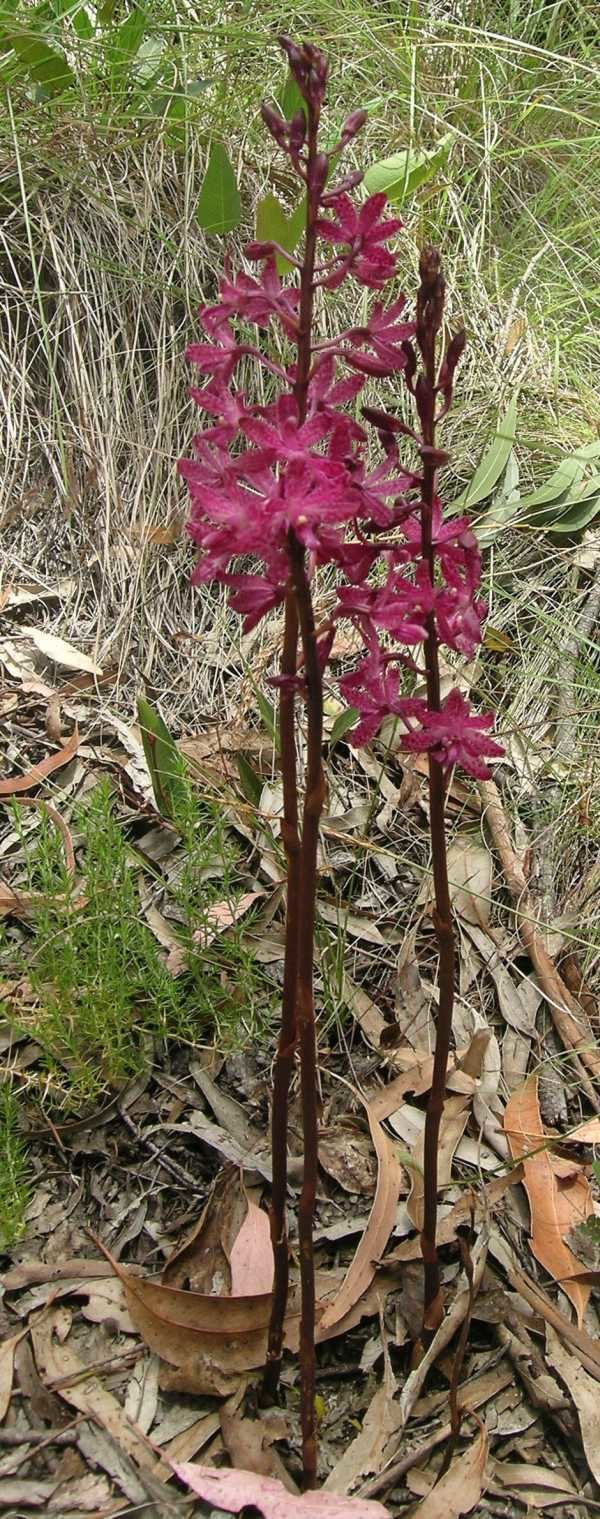 | ||
Similar Dipodium, Dipodium roseum, Dipodium variegatum, Cryptostylis subulata, Caladenia catenata | ||
Dipodium punctatum a native orchid of australia
Dipodium punctatum is a native orchid of Australia. It is commonly known as blotched hyacinth-orchid or hyacinth orchid, though both names can refer to other species.
Contents
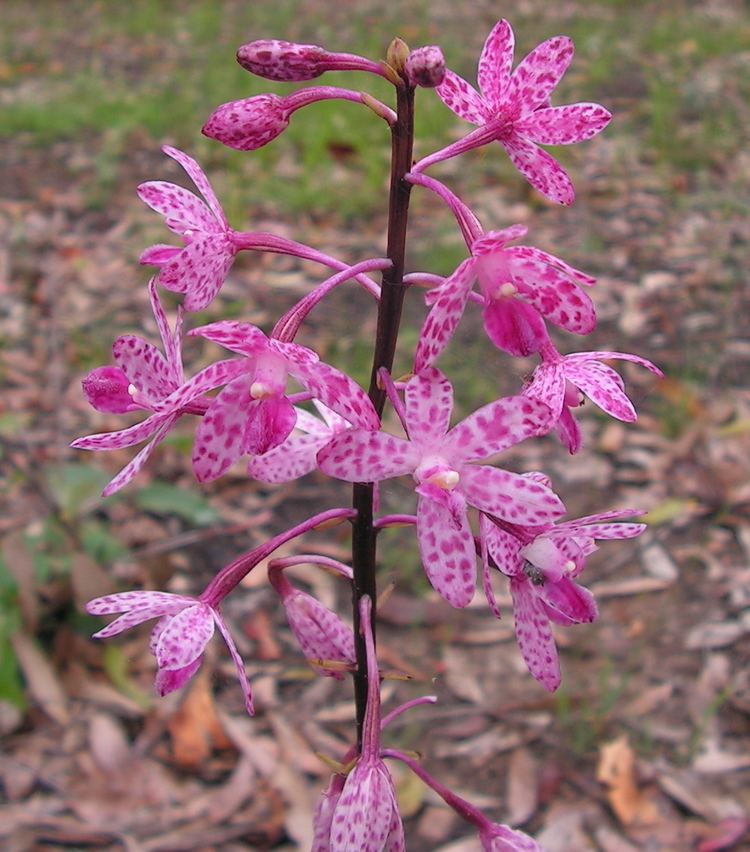
D. punctatum is a leafless mycoheterotrophic plant. The species is terrestrial, favouring protected shady positions in dry forests or woodlands as it is drought and frost tender. The flowers are about 20–25 mm across and are pink with dense purple-red spotting on segments. They appear in hyacinth-like racemes between November and March on a green to blackish scape that grows to a height of 40–100 cm. This orchid is common along the coast and Northern Tablelands of New South Wales, also Queensland, Victoria and South Australia.

Similar species include D. variegatum, D. pulchellum, D. hamiltonianum and D. roseum.
Taxonomy
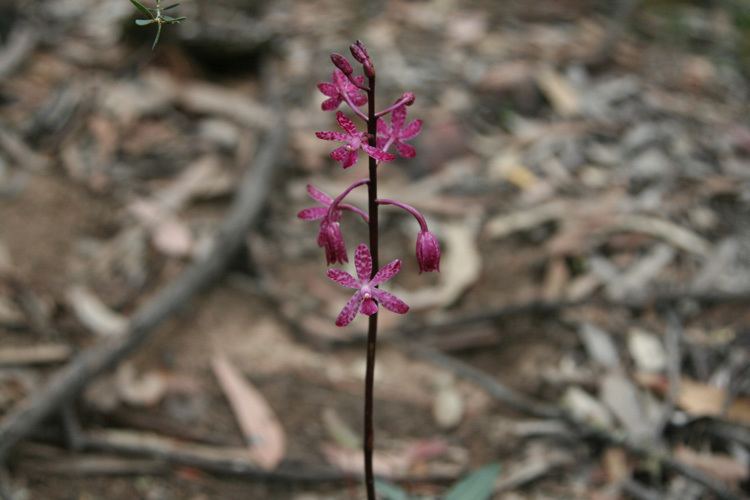
The species was formally described in 1804 by English botanist James Edward Smith in the journal Exotic Botany. Smith gave it the name Dendrobium punctatum. In 1810, Scottish botanist Robert Brown placed the species in his newly described genus Dipodium.
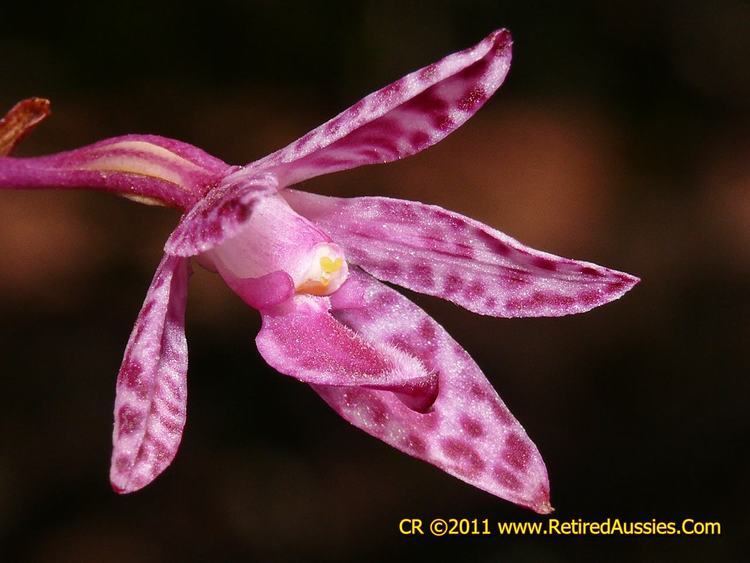
The World Checklist of Selected Plant Families (WCSP) records this species as a synonym of Dipodium squamatum. In Australia, however, Dipodium punctatum is an accepted name in the Australian Plant Census.
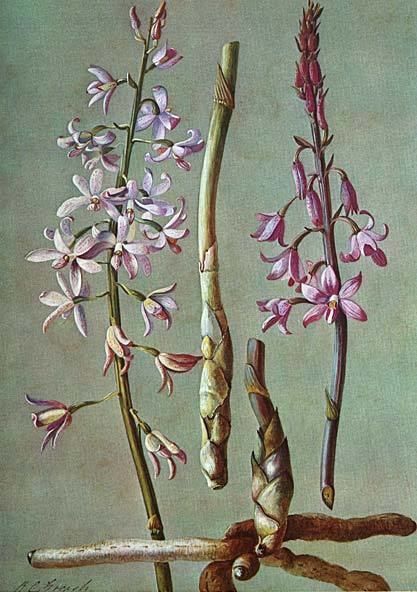
In New Caledonia the name Dipodium punctatum var. squamatum is used to refer to a Dipodium species that occurs there. However Dipodium punctatum var. squamatum is recorded as an illegitimate name and a synonym of Dipodpium squamatum in the WCSP.
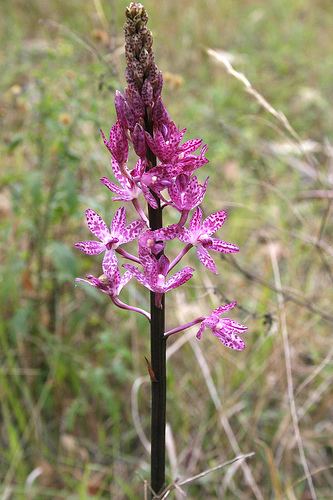
Dipodium punctatum does not occur in Tasmania. Plants in that state previously classified as D. punctatum are currently referred to D. roseum, which was described in 1991.
In South Australia, D. punctatum is listed as endangered. Populations currently included within D. roseum and D. campanulatum were originally part of a wider circumscription of D. punctatum in South Australia.
